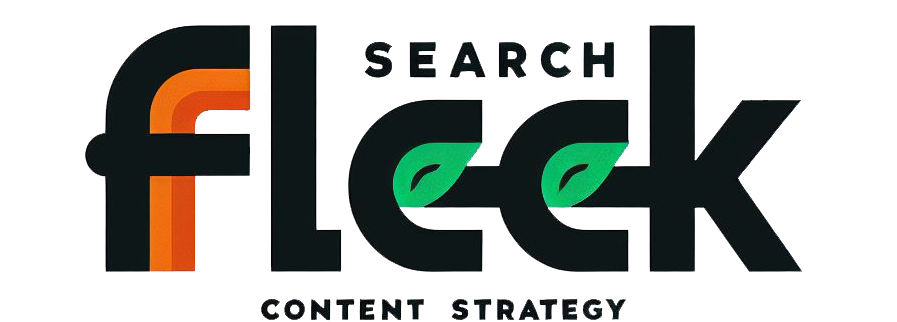Welcome to the world of lifestyle blogging! Whether you’re passionate about fashion, travel, wellness, or something entirely different, a lifestyle blog allows you to share your interests, connect with a like-minded community, and potentially turn your passion into profit. This comprehensive guide will equip you with all the knowledge and tools you need to launch and grow your successful lifestyle blog.
Finding Your Niche
Before diving headfirst into content creation, it’s crucial to identify your niche. A focused niche attracts a dedicated audience who shares your interests and actively seeks out your unique perspective. Here’s how to find yours:
- Embrace Your Passions: What are you truly enthusiastic about? Make a list of your hobbies, interests, and areas of expertise. This forms the foundation for your niche selection.
- Market Research: Don’t operate in a vacuum. Research existing blogs within your potential niche. Analyze their content, audience engagement, and potential gaps you could fill.
- Refine Your Focus: Once you have a few niche contenders, consider the competition level, target audience size, and your own long-term interest.
Building Your Blog’s Foundation

With a niche in mind, it’s time to build the platform that will house your creativity. Here’s what you need to consider:
Choosing a Blogging Platform:
Popular options include WordPress, Blogger, and Wix. WordPress offers greater flexibility and customization, while Blogger and Wix are user-friendly for beginners. Choose based on your technical skills and long-term goals.
Selecting a Domain Name:
Your domain name is your blog’s address on the internet. Opt for a name that’s memorable, relevant to your niche, and reflects your brand identity. Keep it short, easy to spell, and brandable for future growth.
Securing Reliable Hosting:
Think of web hosting as the land your blog resides on. Reliable hosting ensures your blog is always accessible to readers. Consider factors like uptime (website availability), storage space, and bandwidth (data transfer capacity).
Designing Your Blog:
First impressions matter! Your blog’s design should be user-friendly, visually appealing, and aligned with your niche. Choose a theme that complements your brand and consider customization options like fonts, colors, and layout.
Creating Essential Pages:
Beyond your blog posts, create core pages like “About Us” to introduce yourself and your blog’s mission. Include a “Contact” page for reader inquiries and establish trust with a “Privacy Policy” outlining data collection practices.
Content is King: Crafting Captivating Posts
Now comes the fun part – creating content your audience will love! Here are some key strategies:
- Brainstorming Compelling Content Ideas: Maintain a consistent flow of fresh ideas. Research trending topics, analyze reader comments, and leverage social media polls to understand your audience’s interests.
- Finding Your Voice and Writing Style: Develop a unique voice that resonates with your readers and aligns with your brand. Be authentic, informative, and inject your personality into your writing.
- The Anatomy of a Great Blog Post: Structure your content for readability and engagement. Craft captivating headlines, write clear and concise introductions, and break down your content with subheadings and visuals (images, infographics).
- Headlines: Your headline is the first impression. Use strong verbs, keywords, and keep it concise to entice readers to click.
- Introductions: Hook your readers from the start. Briefly introduce the topic, highlight the key takeaway, and pique their curiosity.
- Content Body: Structure your post logically with subheadings to guide readers. Use clear language, avoid jargon, and incorporate captivating visuals to enhance understanding.
- Calls to Action: Don’t leave readers hanging. Encourage them to comment, subscribe, share your post on social media, or explore other sections of your blog.
- Optimizing for Search Engines (SEO): Boost your blog’s visibility by implementing basic SEO practices. Research relevant keywords your target audience uses and strategically integrate them throughout your content (naturally, not forced).
Promoting Your Masterpiece: Spreading the Word

Creating fantastic content is just half the battle. Now you need to get it in front of the right audience:
The Power of Social Media:
Establish a presence on platforms where your target audience resides. Share your blog posts strategically, engage with followers, and participate in relevant conversations.
Email Marketing:
Build an email list and craft engaging newsletters to keep your audience informed and connected. Share exclusive content, offer early access to new posts, and announce upcoming events.
Content Collaboration:
Guest blogging on other relevant blogs is a fantastic way to reach new audiences. Identify established blogs within your niche, contact the owners, and pitch guest post ideas that offer value to their readers.
Search Engine Optimization (SEO):
SEO is an ongoing process. Utilize keyword research tools to identify additional relevant keywords and optimize your older content for improved search visibility.
Leveraging Paid Advertising (Optional):
Consider paid advertising options like social media ads or Google Ads to target a specific demographic interested in your niche.
Monetization Strategies: Turning Passion into Profit
While building a successful blog takes time and dedication, it can eventually become a source of income. Here are some popular monetization techniques:
- Affiliate Marketing: Partner with companies relevant to your niche and promote their products or services. You earn a commission for every sale generated through your unique affiliate link.
- Display Advertising: Integrate relevant ads into your blog layout. When readers click on these ads, you earn a commission. Choose ad networks that align with your brand and avoid overwhelming your readers with excessive ads.
- Selling Products or Services: Leverage your blog to sell your own digital products (e-books, courses) or services (consulting, coaching). This allows you to directly generate income from your expertise.
- Sponsored Content: Collaborate with brands to create sponsored posts that promote their products or services while maintaining your brand voice and audience interests. Ensure transparency by disclosing sponsored content partnerships.
Essential Tools and Resources
To streamline your blogging journey, equip yourself with helpful tools:
- Content Creation Tools: Utilize tools like Grammarly for proofreading, Canva for creating stunning visuals, and online photo editing tools for image optimization.
- SEO Tools: Explore free or paid SEO tools like Ahrefs or SEMrush to conduct keyword research, analyze competitor websites, and track your website’s search engine ranking.
- Social Media Management Tools: Tools like Hootsuite or Buffer help schedule posts across various social media platforms, saving you time and ensuring consistent social media presence.
- Analytics Tools: Utilize website analytics tools like Google Analytics to understand your audience demographics, track content performance, and identify areas for improvement.
Beyond the Basics: Advanced Strategies for Growth
Once you’ve established your blog’s foundation, consider these advanced strategies to accelerate growth:
Building an Email Funnel:
Create an automated email sequence that welcomes new subscribers, educates them about your niche, and ultimately encourages them to convert into paying customers (if applicable).
Content Promotion Strategies:
Explore advanced content promotion tactics like influencer marketing – collaborating with established figures in your niche to promote your content to their audience. Broken link building involves finding relevant websites with broken links pointing to outdated content and suggesting your own content as a replacement, directing valuable traffic back to your blog.
Building a Community:
Foster reader engagement beyond comments. Create a forum on your blog or utilize social media groups to encourage discussions, host online challenges, and offer interactive content like quizzes or polls.
Content Diversification:
Experiment with different content formats to keep your audience engaged. Consider incorporating video content like vlogs or interviews, creating podcasts on relevant topics, or hosting webinars to provide in-depth insights.
Staying Up-to-Date:
The blogging landscape is constantly evolving. Stay informed about industry trends, adapt your blog to changing audience preferences, and keep pace with the latest SEO best practices to maintain your competitive edge.
Common Challenges and How to Overcome Them
Blogging comes with its own set of challenges. Here’s how to navigate them:
- Overcoming Writer’s Block: Everyone experiences creative slumps. Maintain a content calendar to plan post topics in advance, brainstorm with fellow bloggers, or take breaks to refresh your perspective.
- Maintaining Motivation: Blogging success doesn’t happen overnight. Set realistic goals, celebrate milestones, and connect with other bloggers for support and inspiration.
- Managing Negative Feedback: Not everyone will love everything you write. Respond to constructive criticism with grace, learn from it, and avoid engaging with negativity.
- Time Management: Balancing blogging with other commitments can be tricky. Prioritize tasks, create a daily or weekly content creation schedule, and delegate tasks where possible.
- Keeping Up with Competition: Stay informed about what other bloggers in your niche are doing, but don’t copy them. Focus on honing your unique voice and offering fresh perspectives to your audience.
Conclusion: The Final Word
Starting a successful lifestyle blog is a rewarding journey filled with learning, creativity, and the potential to connect with a passionate community. Embrace the continuous learning process, adapt to the evolving digital landscape, and most importantly, have fun sharing your unique perspective with the world.
Emon Anam, CEO of Search Fleek, isn't your typical digital guru. He brings a unique blend of financial expertise (former banking pro!) and digital marketing mastery to the table. A self-proclaimed "SEO Sherlock Holmes," Emon unlocks content secrets for local businesses and SaaS companies. But beyond the keyboard, he's a devoted family man, music enthusiast, and cricket champion. Let Emon weave your digital success story!




